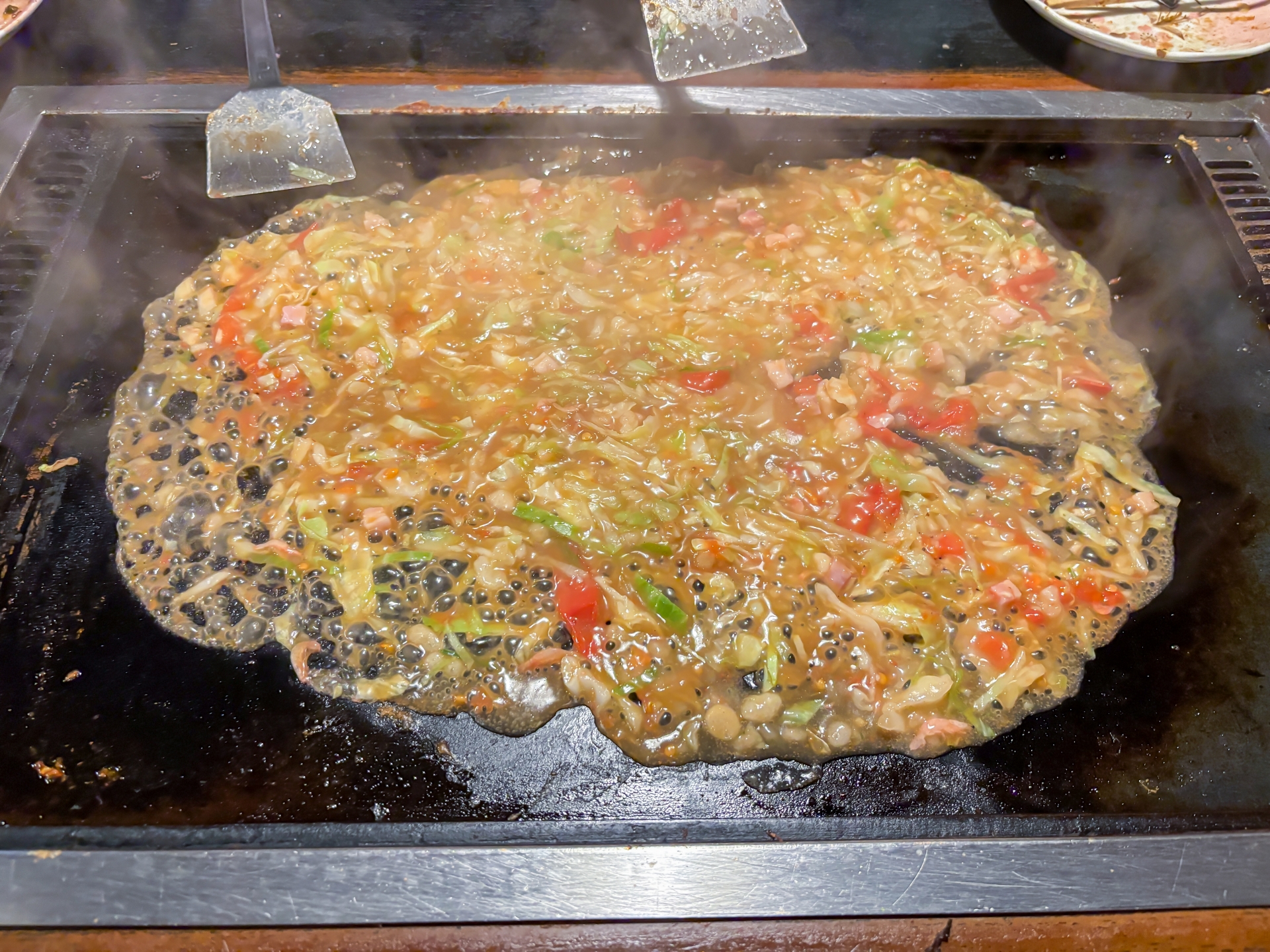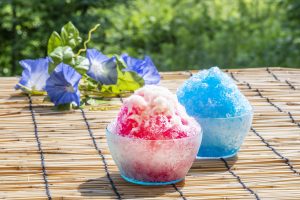Have you ever tried “Monjayaki”? This unique Japanese dish, cooked on a hot iron griddle, is one of Tokyo’s iconic local cuisines. With its interactive dining style—where you prepare and cook your own food over the hotplate—Monjayaki offers a delightful and authentic cultural experience. It’s increasingly popular among foreign tourists as a must-try activity that connects them to Japanese traditions.
In this article, we will cover everything about Monjayaki: its origins, how to cook it, recommended spots in Tokyo, and tips for truly enjoying this mouthwatering dish.
What is Monjayaki? Its Origins and Cultural Background
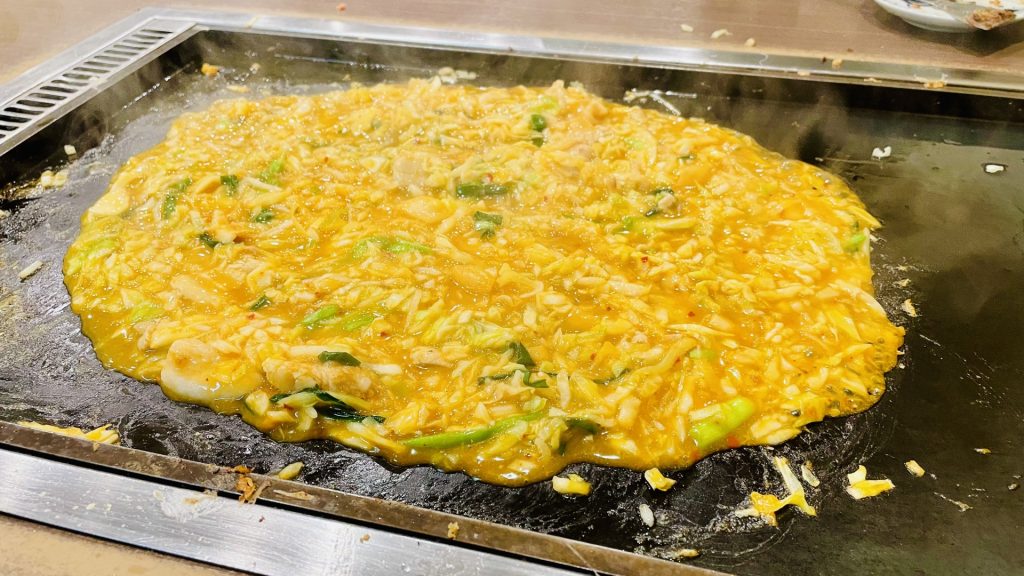
Monjayaki is a Japanese savory pancake made from a liquid batter of flour mixed with water, shredded cabbage, and various toppings such as seafood, meat, or other ingredients of your choice. Known as a soul food of Eastern Japan, particularly in Tokyo’s downtown neighborhoods, Monjayaki is often compared to similar dishes like “Okonomiyaki” (a thicker version from Western Japan) or “Takoyaki” (octopus balls). However, Monjayaki stands out because of its unique runny consistency and its playful cooking process.
The Origins of Monjayaki
The history of Monjayaki can be traced back to the late Edo period (19th century). Originally called “Moji-yaki” (literally “character grill”), it was enjoyed as a snack by children who wrote words or characters on the hot griddle with the batter as a fun form of entertainment. Over time, ingredients and cooking methods evolved, eventually transforming Monjayaki into the hearty, flavorful dish we know today. The Moon-shaped island of Tsukishima in Tokyo has played a significant role in popularizing Monjayaki and is now considered its cultural hub.
A Step-by-Step Guide for Cooking Monjayaki
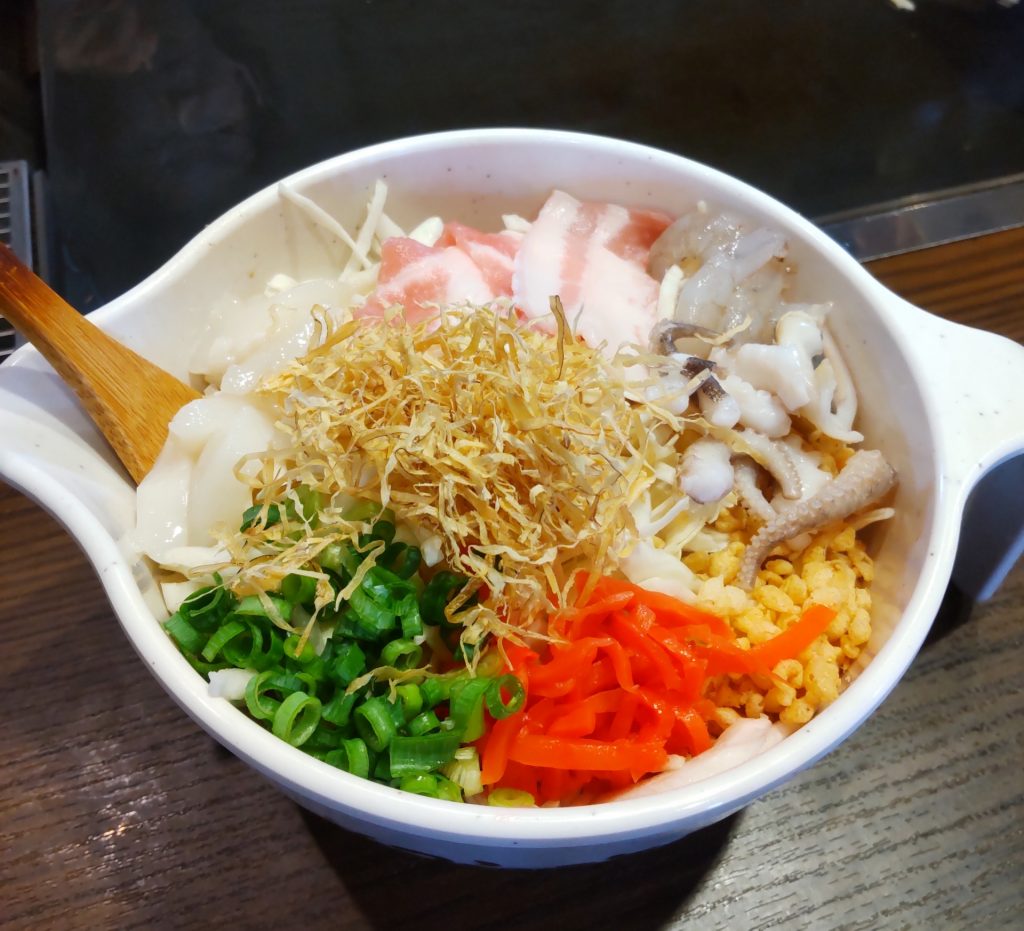
Cooking Monjayaki is not just about eating; it’s a lively and engaging activity. Whether it’s your first time or not, follow this simple step-by-step guide to make your Monjayaki experience unforgettable.
How to Cook Monjayaki
- Heat the Griddle
Preheat the iron griddle (preferably on high heat). Spread oil evenly on the surface using a spatula to make sure the Monjayaki won’t stick. - Stir-fry the Ingredients
Place your chosen ingredients, such as shredded cabbage, seafood, or meat, in the center of the griddle and stir-fry them lightly. This step brings out the aroma and enhances the flavor. - Build a Wall (a.k.a. “Dote”)
Once the ingredients are cooked, shape them into a circle, creating a small well in the middle. This iconic “dote” (wall) is an essential part of the Monjayaki experience and helps contain the liquid batter. - Pour the Batter
Slowly pour the liquid batter into the well. Be careful not to break the wall until it has partially cooked. - Mix and Flatten
Once the batter thickens, mix everything together, spreading it out evenly over the griddle. Allow it to cook slightly until you see a thin crust forming underneath.
When eating Monjayaki, use a small spatula (called “hagashi”) to scrape up a bite-size portion and enjoy it right off the griddle. Every bite offers amazing textures, from the creamy batter to the crispy charred bottom!
Best Places in Tokyo for Monjayaki Lovers
Tsukishima: The Home of Monjayaki
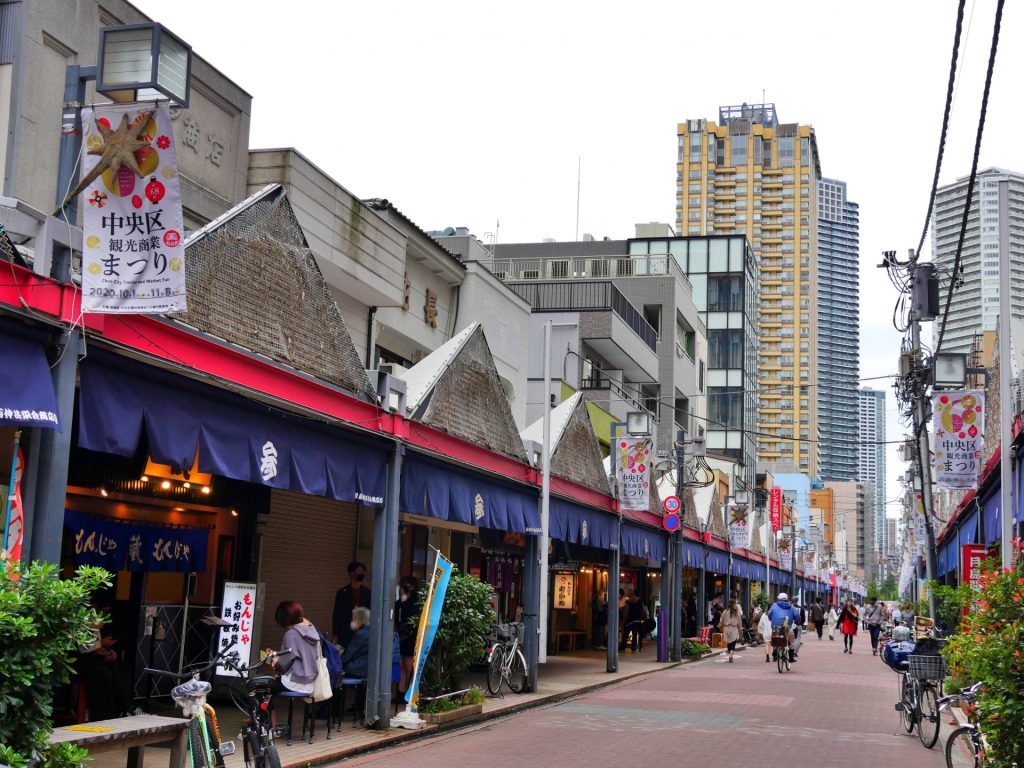
The Tsukishima Monja Street is the most famous area for Monjayaki in Tokyo. This lively street is home to over 70 specialized Monjayaki restaurants, catering to all kinds of tastes. Many of these spots are tourist-friendly, with English menus and helpful staff. If you’re a first-timer, the waitstaff will often guide you through the cooking process, making it a perfect place to start your Monjayaki adventure.
Recommended Restaurants in Tsukishima
- Oshio
A long-loved restaurant offering everything from classic Monjayaki to more modern variations like mentaiko (spicy cod roe) and cheese-filled Monjayaki. - Kondo
One of Tsukishima’s oldest establishments, founded in 1892. Their traditional “Edo-style Monjayaki” offers the perfect balance of flavor and texture. - Moheji
Located near the Tsukishima station, this popular restaurant is known for its seafood-rich Monjayaki and an extensive topping menu.
Access: Tsukishima Monja Street is located a 3-minute walk from Tsukishima Station on the Toei Oedo Line or Tokyo Metro Yurakucho Line.
Asakusa: Monjayaki Near Historical Attractions
Asakusa, famous for landmarks like the Kaminari Gate (Kaminarimon) and Nakamise Street, is another great spot to enjoy Monjayaki. Restaurants here offer a mix of traditional Monjayaki and creative new flavors. After sightseeing, indulge in a unique dining experience at these cozy, local eateries.
Recommended Restaurants in Asakusa
- Edo-Monja Hyotan
A historical Monjayaki spot with a charming traditional vibe, serving authentic yet simple flavors that highlight the dish’s origins. - Tsukushi
Located just beyond the busy areas of Asakusa, this hidden gem combines a relaxed atmosphere with unique creations like mentaiko and shiso-flavored Monjayaki.
Beyond Tokyo’s City Center: Exploring Suburban Monjayaki
If you’re looking to enjoy Monjayaki away from the bustling streets of inner Tokyo, suburban areas like Tama or Musashino offer relaxed dining experiences. These restaurants often blend local ingredients into their Monjayaki recipes, giving you a fresh take on the dish.
Why Visit Suburban Monjayaki Spots?
- You’ll encounter fewer crowds.
- Staff often take time to explain how to make Monjayaki perfectly.
- Discover unique sauces or toppings that add a regional touch to the dish.
Fun Facts About Monjayaki
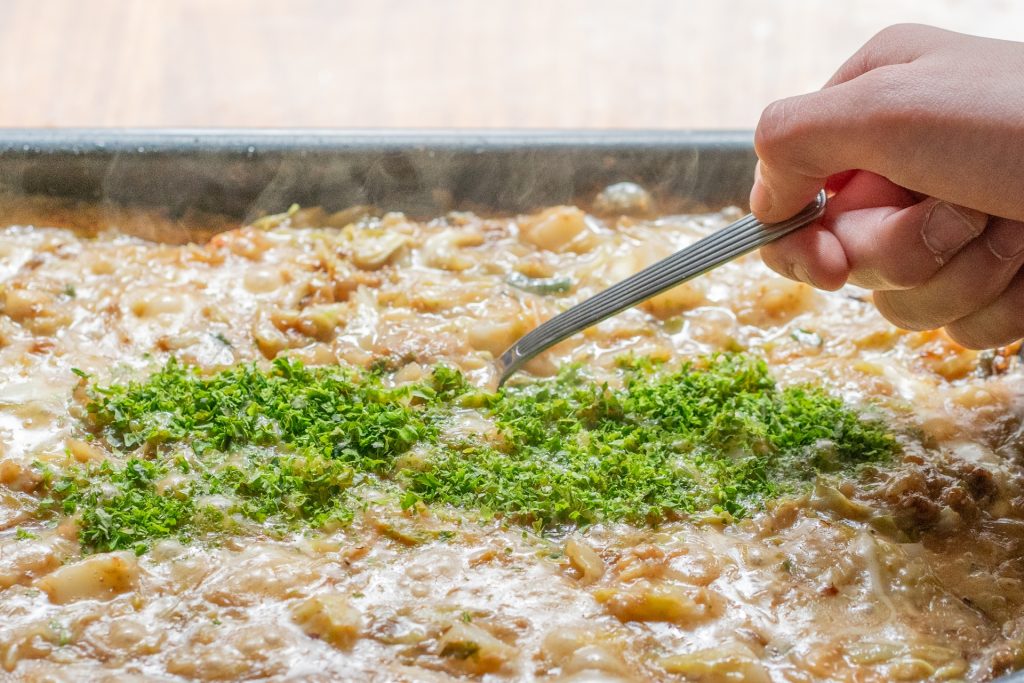
1. Healthy and Low-Calorie!
Did you know Monjayaki is considered a relatively healthy dish? Its batter is lighter than Okonomiyaki’s, and it contains plenty of shredded cabbage and other vegetables. Even with rich toppings like seafood or meat, it’s a great choice for those looking to indulge without guilt.
2. Unique Sauces and Toppings
Monjayaki’s flavors can depend heavily on the sauce. Most restaurants use their house-made special sauce, ranging from sweet to spicy, which allows you to enjoy subtle differences between each establishment.
3. The Art of “Hagashi”
The small spatula you use for eating Monjayaki, called “hagashi,” is essential for getting the crispy bottom layer. Press lightly against the griddle for the best texture while scraping up your next bite.
4. Take the Flavor Home
Some restaurants in Tsukishima offer “Monjayaki Kits” or bottled sauces as souvenirs, so you can recreate the experience at home and share it with friends and family.
Conclusion
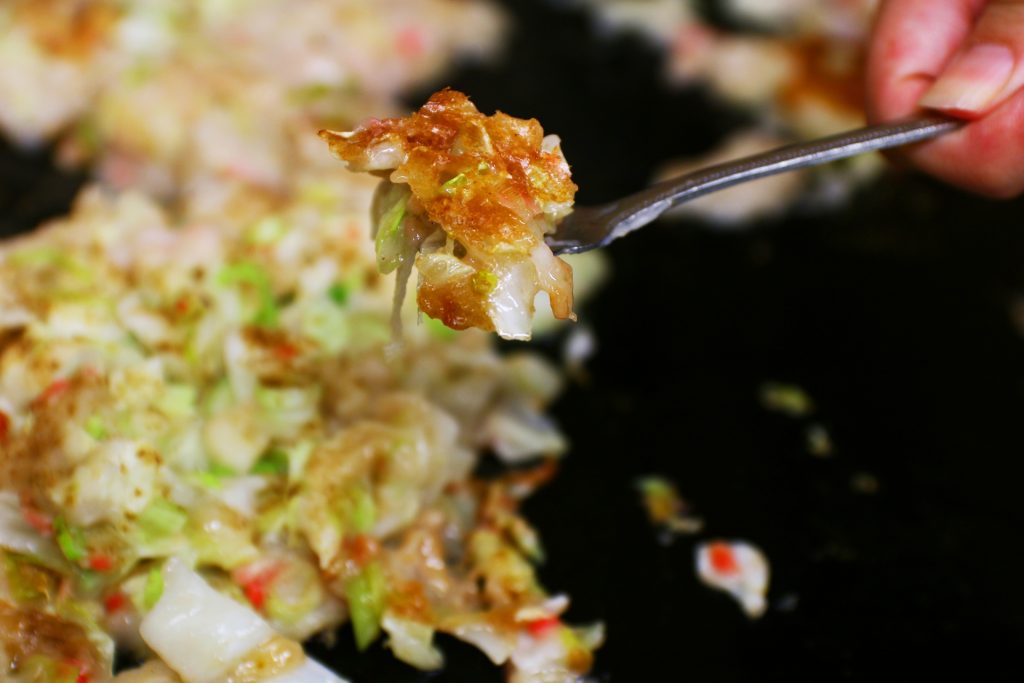
Monjayaki is more than just a local dish; it’s an engaging way to bond with friends and family, experience a slice of Japanese culture, and enjoy a delicious meal. Whether you’re exploring the lively streets of Tsukishima or discovering a hidden gem in Asakusa, Monjayaki guarantees a memorable dining experience. Add it to your Tokyo itinerary and savor the taste of Japan’s one-of-a-kind teppan cuisine!



